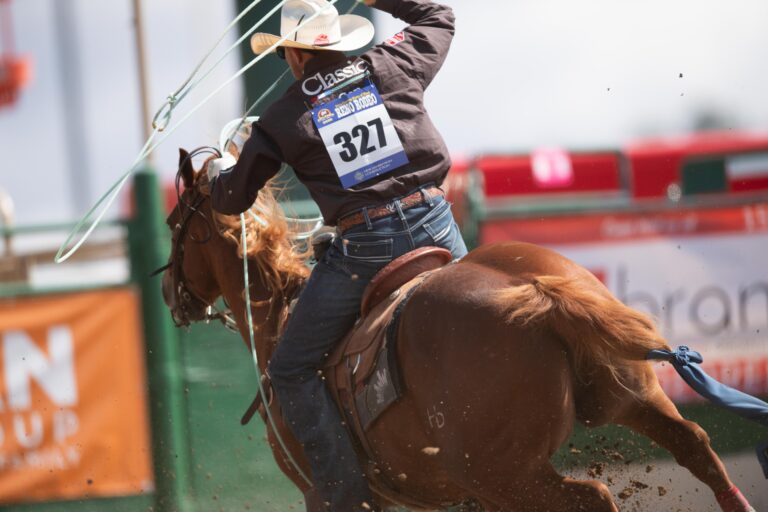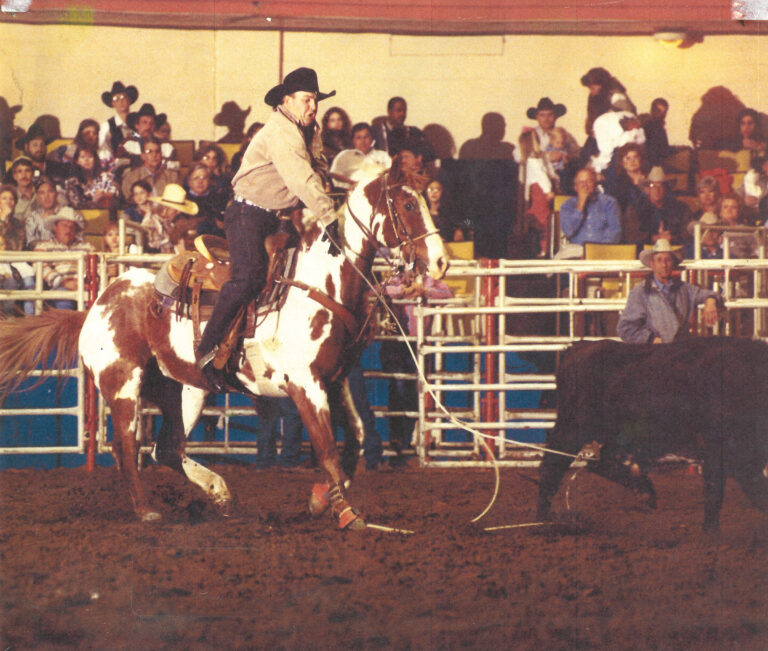Colic is fairly common in horses, especially when they’re being hauled. Some horses never colic, but others are prone to it. So it’s something you need to be aware of and be able to treat. If you’re a horse person and you travel, it’s handy to be able to recognize and treat mild colic cases yourself.
There are several signs and symptoms of colic. It could be as simple and subtle as a horse not wanting to eat or drink, stretching out, pawing, kicking at his belly, laying down and rolling. If a horse gets to the point of violently rolling, you need to get somewhere and find a vet to help you.
Read More: HELPING YOUR HORSES IN THE LONG HAUL
If a horse is stretching out and pawing, and just a little bit uncomfortable, it’s a good idea to call a vet and let him know what’s going on, so he’s not surprised if you call him back. But that’s something you can probably at least start treating yourself. If it’s looking like a mild case of colic and you’re on the road, Banamine is a good start. One thing I’ll say about Ban-amine is never, ever give it in the muscle.
[Get a Ready-Made Trailer First-Aid Kit]
Trailering Equine First Aid Kit
(As an Amazon Associate, we earn from qualifying purchases made through affiliate links.)
A classic reaction to intramuscular Banamine is a clostridial infection, which by itself can be fatal and even in a mild form causes significant muscle damage. It doesn’t happen very often, but when there is a reaction it’s catastrophic. You can give injectable Banamine orally—10 cc’s in the mouth—and it’s absorbed. For a 1,000-pound horse, the dose is 8 cc’s intravenously. Paste is also fine, if you have it.
In a more extreme case of colic, where you need to call in a veterinarian, check-ing heart rate is important. I’ve seen horses that had a colon torsion, and the only finding they had was an elevated heart rate. Some horses are just amazingly tough. Gut sounds are really important, too, as is checking for a high respiratory rate, which is associated with pain. Checking gum color—and how fast the blood comes back and the gum returns to being pink after you push on it—is also a good idea.
Read More: Vet Trends: Arizona Travel
One thing most vets will do early on is pass a tube to see if there’s a lot of fluid on the stomach, which is called reflexing. If there’s a lot of fluid on there, it may just be a full stomach, where taking the fluid off of there and decompressing it gives a horse relief. If it’s not very full, you can put some electrolytes and water back in there with that tube, because most of the time a horse showing symptoms will be dehydrated, as well.
If your horse has a severe case of colic, whether or not you have insurance is an important factor. The vast majority of mortality insurance policies now have colic surgery coverage included. If you have a good horse and he’s not insured, you might consider changing that, in part to get that colic insurance. It’s a pretty cheap way to protect your investment, and that way you don’t have to worry about making that decision about whether or not to operate at 2 o’clock in the morning.
The vast majority of colic cases don’t require surgery. You can put horses on fluids and they’ll get themselves lined out. If they don’t, I’m a proponent of doing surgery sooner rather than later, because if you do it sooner you have fewer complications and a much better chance of recovery. They don’t get toxic, laminitis doesn’t come into play and typically in about two months that horse is back in action again. If you wait and there are complications, it may take a horse six months to a year to come back.
The best thing you can do is have a really good relationship with your vet at home, so he or she will answer the phone at midnight if you have an emergency. Most of us have networks of veterinarians we can recommend even when you’re out there on the road somewhere.
[Build Your Own Vet Kit]
My best advice for colic prevention is simple and cheap—salt. Top dress a horse’s feed with salt every day at home and when traveling to make him drink better. A tablespoon of salt once a day or a teaspoon twice a day helps a horse drink more and stay hydrated, so the incidence of colic goes way down. If you have a bunch of horses, you can buy a 50-pound bag of salt cheap from the feed store.
Read More: A Barrel Racer’s Vet Supply Tips to Team Ropers on the Road
I suggest you keep three drugs—Ban-amine, Buscopan and Xylazine—in your trailer at all times when hauling horses. If horses have gas colic, give them Banamine (not in the muscle) and Buscopan, which helps relax the lining of the intestine (in the vein). If a horse doesn’t feel better, he needs to go somewhere and see a vet.
If you’re in the middle of nowhere, your horse is really painful and you need to haul him to be seen, Xylazine is a really handy drug to have around, because it’s a very potent pain killer for the intestines. If you’re in a bind, consult the vet you’re working with for the correct dosage of Xylazine for your horse, put him in the trailer and get him there.











